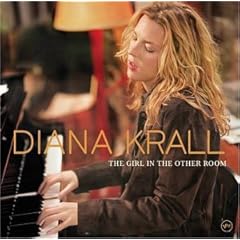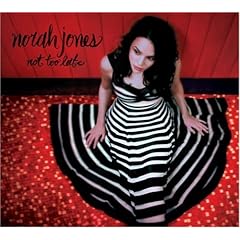-
Posts
695 -
Joined
-
Last visited
Content Type
Forums
Events
Gallery
Posts posted by TNRabbit
-
-
Enigma is good for an hour or so of hot, sweaty, fun.
But for pure sex appeal, albeit short, I'd have to choose "Temptation" by Dianna Krall~
-
quad I'm not trying to be rude but did you not read any of the responses we gave you in your other post in regards to your RF3s?
ORIGINAL THREAD LINK: http://community.klipsch.com/forums/p/131681/1338480.aspx#1338480
I agree 100%. We provided constructive help in the previous thread, yet you start another thread on the same topic...? Where are the RF-3s in relation to where your bookshelf speakers were located? As previously noted, there are many factors to consider....
Also, how old is your Quad 303 amp? Is it possible the capacitors are in need of replacement?
You've also posted several other threads on these speakers; sounds like you're not happy with them--perhaps we should consolidate all these into one thread & address your issues...
http://community.klipsch.com/forums/p/131508/1331403.aspx#1331403
http://community.klipsch.com/forums/p/130929/1325054.aspx#1325054
http://community.klipsch.com/forums/p/129766/1313006.aspx#1313006
-
Um.....wikipedia?
-
Monty Alexander Trio: Impressions In Blue

Dianna Krall: The Girl In the Other Room

Bobby McFarren: The Best of Bobby McFerrin

Norah Jones: Not Too Late

Kunzel/Cincinnati Pops: Tchaikovsky
1812 Overture
Steely Dan: Everything Must Go

Donald Fagen: Kamikirad

-
Pull your woofers & verify that they are wired in phase; I've had TWO pair of Klipsch speakers show up from the factory internally wired incorrectly (KLF-10s & RF-83s).
-
As of now, no one from Klipsch forum yet. I've advertised across both Carver forums, Klipsch, & Polk Audio forum. There is one from Polk, 2 friends locally, & one ffrom the Carver forum so far..
-
4 confirmed so far; countdown: 12 days~
-
Check ALL interior & exterior connections & ensure you don't have something out of phase (+ & -)
What you're describing could be a woofer or entire speaker out of phase. I've found woofers mis-wired in both KLF-10 & RF-83 speakers-they came that way new.
-
I'm planning to have a few folks over from 2 p.m. 'til whenever on Saturday, March 13th, 2010, for a listening session. Anyone who is interested in hearing my system, please PM me for details. Location is Lusby, MD, (Calvert County) near Solomons Island.
-
"Will a pair of Klipschorns fit in a 2006 GMC Denali?"
They will, but you have to do some cutting to get them to fit completely inside the door~
-
Balanced -vs- unbalanced connections
-
Yes, you can use a Y-splitter. You just need to ensure that your preamp has sufficient juice to power both without distorting.
-
No problem; you're very welcome~ good luck!
-
Thanks for the reply!
Well the manual for the Sony DAV-HDX576WF states in the specification section that its 3 ohms. Also the stickers on the back of the Sony speakers say 3 ohms. -Can I damage the RF-3's using the sony amp at 3ohms? If the Pioneer is rated 60 watts into 4 ohms, that means it ouputs probably 45 watts or less into 8 ohms. So this isn't really a valid question.Assuming this is true could I hurt the RF-3 by using them with this Sony receiver?Not likely, it's just underpowered...so it will run out of steam very quickly.
So If I use the Sony receiver with the RF-3 and the Sony is outputting 3 ohms could this hurt the RF-3's? An amp doesn't "output" 3 ohms. The ohm rating is the resistance of the speakers, only. Again, it's just underpowered. An amps output in watts rises as the impedance/resistance of the speaker goes down, but each amp has a minimum resistance it will safely drive (varies but low resistance loads usually can't be driven except by more expensive/higher quality amplifiers).
-When I connected the speakers to the Pioneer I used the B terminals. I'm shy about running wires to both A and B posts and then connecting the speakers to those wires. Is this how I would get 8-32ohms? Or would I simply use the A terminals and then have both A and B switches turned on, on the font of the unit?
Yes, just use the A terminals if you're only using one pair of speakers. YHowever, you could use EITHER A or B, makes no difference.
Is the connection done internally or externally? Should I even connect the RF-3s to use 8-32 ohms? You only have ONE pair of speakers, right? It's entirely superfluous to connect them to both A & B outputs; won't change a thing--connecting to either presents the same load to the amp. If you had TWO pair of 8 ohm speakers, that would reduce your total impedance to 4 ohms, which is why they state don't use speakers less than 8 ohms if you are using two pair.
Correct I only have one pair. The Pioneer manual says that I could give 8-32 ohms if I connected to both A and B terminals. Its unclear how I should use both A and B terminals. On Amps that support this do they do the switching internally? Meaning to get 8-32 ohms I would wire to just the A Posts on the amp but have Both A and B switches turned on, on the Amp? The A/B is for two pair of speakers. Makes no difference which you use with one pair. The "8 to 32 ohms" thing simply means you can use speakers with any impedance between 8 & 32 ohms. Yours are 8.
-
My mistake; they are Oxygen Free Copper, NOT silver.
The ICs I had before were complete cheap crap, so these are an improvement~
VERY smooth, transparent.....like everything SHOULD be.
Details can be found here: http://www.carveraudio.com/phpBB3/viewtopic.php?f=146&t=11177&p=106723&hilit=carveraudio+silver+interconnect#p106723
-
I just bought a pair of RF-3 an RC-3 and a sub for 375.00, good deal?.... When I connected them to my Sony receiver, they did not sound what I anticipated. I have one those home theater in box kits DAV-HDX576WF. I checked the specs and its rated at 143 watts per channel at 3 ohms. I also have a Pioneer A-35R which is rated 60 watts* per channel, min., at 4 ohms. Huge, Huge, Huge difference using the Pioneer A-35R the speakers really come alive.
The "theater in a box" was most likely WAAAAAY overstating it's output. Also, they stated it's output into THREE OHMS!! I've never heard of any amplifier maker stating it's output into 3 ohms; that's just WEIRD.
All speakers have an impedance rating, which is the amount of resistance they present to the amplifier. Higher numbers equal more resistance & result in less power available from the amp. Amplifiers have a minimum impedance they will drive as the lower the impedance, the more current which is required from the amp to drive said speakers.
The Pioneer A-35R also says this:
Speaker Impedance
When speaker systems are connected to only SPEAKERS A
or SPEAKERS B terminals, such speakers should have rated
impedance in the range of 4–16 ohms.
When speaker are connected to both A and B terminals, they
should have a rated impedance in the range of 8 –32 ohms.
If you were to connect 2 pair of speakers rated at 4 ohms impedance, you'd be presenting a 2 ohm load to the amp, which it isn't designed to drive.I have several questions:
-Can I damage the RF-3's using the sony amp at 3ohms? If the Pioneer is rated 60 watts into 4 ohms, that means it ouputs probably 45 watts or less into 8 ohms. So this isn't really a valid question.
-Whats the minimum ohm rating for the RF-3s; for that matter is there a minimum or a maximum?
I'm pretty certain your RF-3s are 8 ohm speakers. You don't have
nearly enough amp to bring out the best in your speakers. The impedance of speakers varies over the range of audible frequencies. A speaker rated 8 ohms can dip or rise to many time above or below that rating depending on the frequency. Manufacturers take a "nominal" rating that is average over the audible spectrum.-When I connected the speakers to the Pioneer I used the B terminals. I'm shy about running wires to both A and B posts and then connecting the speakers to those wires. Is this how I would get 8-32ohms? Or would I simply use the A terminals and then have both A and B switches turned on, on the font of the unit? Is the connection done internally or externally? Should I even connect the RF-3s to use 8-32 ohms?
You only have ONE pair of speakers, right? It's entirely superfluous to connect them to both A & B outputs; won't change a thing--connecting to either presents the same load to the amp. If you had TWO pair of 8 ohm speakers, that would reduce your total impedance to 4 ohms, which is why they state don't use speakers less than 8 ohms if you are using two pair.
I'm kinda confused about the ohms. I checked the spec sheet on the RF-3 and it does not give the minimum impedance values. Like I said, I'm pretty certain they are 8 ohms nominal, as that's what most of the Klipsch line are.I hope I've explained this in such a way you can understand. There are a lot of electronic elements at play here which you obviously don't understand. Hopefully we can educate you in what you need (or want) to know~
-
I recently upgraded from cheap, crappy interconnects to silver ICs custom made by James Sauter at www.carveraudio.com. The quality/fit/finish is excellent, and thus far the sound is sublime (only 1 day listening time thus far):






Yes, those are LOCKING connectors~ -
Things are not QUITE that simple.
First of all, at what level do you intend to listen?
Also, 150 wpc on fairly efficient speakers is a LOT of power. Usually, a rating like that on a speaker indicates it's maximum SAFE continuous power handling level. In the case of cheaper speakers, that may represent the absolute maximum the speaker can withstand (a LOT different than the nominal continuous power capability).
I'm from the camp that states it's always better to have TOO much power, if for not other reason than to handle transient peaks without clipping (bad thing). Clipping can fry tweeters & crossovers very quickly. That said, MOST average folks never approach clipping on audio equipment, because it just sounds so bad (note I said MOST).
Let us know more details, like what configuration you intend to use these speakers in, your end goal, etc., you'll get plenty of advice (& opinions)~ Welcome to Klipsch!
-
a simple"Y" connector....radio shack
That will work, or if one of your sub amps has an output, you can go from the receiver to that sub and then go from that sub to the second sub.
x2; you can "daisy-chain" most modern subs.
-
Replied on carveraudio, too: You shouldn't have any issue with that setup/amp combo IF you're not pushing too hard. If you plan to run the ragged edge, you might consider a beefier receiver, like the Sunfire Ultimate Receiver. I believe Sherbourne & Emotiva make a VERY similar receiver as well.
-
Carver Amazing Loudspeakers-Platinum model.
"In this corner";
Capable of Sucking up a Bazillion Watts! (don't cry SET owners)
With a Undefeated Record of Creating More Heat then a Professional Salamander!
AndStilllll.... Capable of Less Total Maximum Acoustic Output [:'(]
The Amazingly Pretty Power Pigs!!!!

Roger
Jealous much?
It ain't ALL about SPL~
[H]
-
Carver Amazing Loudspeakers-Platinum model.
-
That amp should easily handle those loads.
-

















Southern Maryland Get-together: March 13, 2010
in 2-Channel Home Audio
Posted
Bump*
Countdown: 7 days